On the Road is a weekday feature spotlighting reader photo submissions.
From the exotic to the familiar, whether you’re traveling or in your own backyard, we would love to see the world through your eyes.
I cannot believe that it’s August already. I hate that time is flying by so quickly!
Be sure to take a minute and share your thoughts with Albatrossity.
I have some thoughts, but I would rather hear yours before I share mine!
Albatrossity
Well, we’ve come to the end of the images I collected during our recent brief trip to Montana and back; this is the final installment of those. And we don’t have another trip planned until October.
So, I am soliciting opinions about what to post on Mondays here for the next 2-3 months. I have been collecting images from here in Flyover Country this summer, for sure, and I could make use of some of those here. Alternatively, I could go with some theme or other that would not necessarily be geography-dependent or time-limited. Examples of such could be birds of the same family (corvids, hummingbirds, ducks, raptors, woodpeckers, herons, etc.) from various places that I have visited, both here and abroad. Or color themes, e.g., birds with a lot of blue, or red, or yellow. Or “my favorite bird images” from Arizona or California, or from NZ, or Brazil, or Ecuador, or some of the other places where I traveled to see and photograph birds. Getting away from the bird theme, perhaps landscapes from those places.
You might have other suggestions that I have not thought about, so please chime in with suggestions in the comments. All of these would involve images that you might have seen before, and may or may not remember, but that’s OK, since the main goal for me is not novelty, but beauty and learning about the natural world.
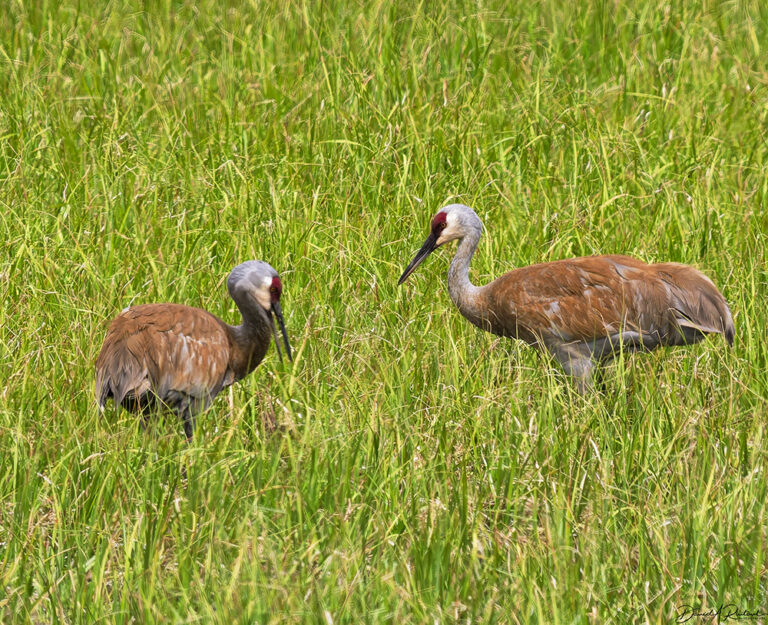
First up today is another of my favorite birds, Sandhill Crane (Antigone canadensis). This pair was foraging around that alpine lake in Yellowstone National Park, and hopefully they have a chick or two there right now. Click here for larger image.
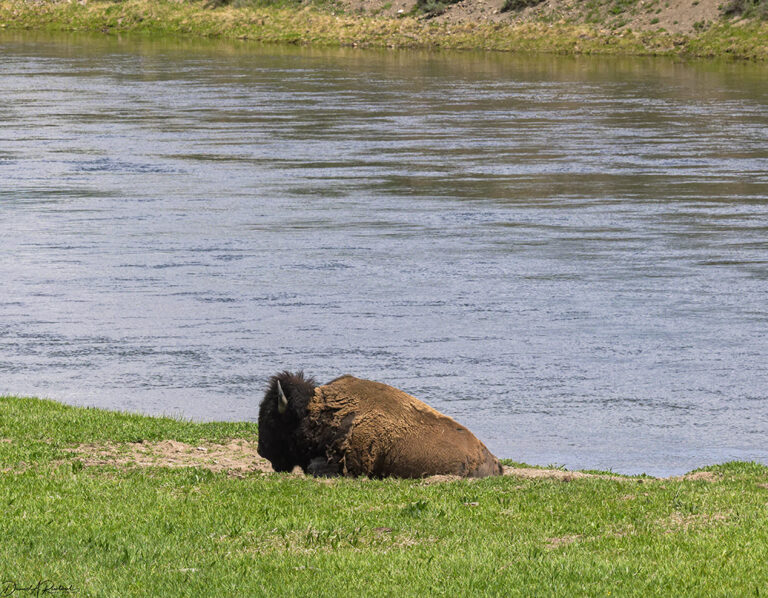
A massive American Bison (Bison bison) bull lounging alongside the Yellowstone River. We followed the guidelines and did not attempt to get closer for a picture, and that resulted in none of us getting gored like a regular Yellowstone tourist. Win-win. Click here for larger image.
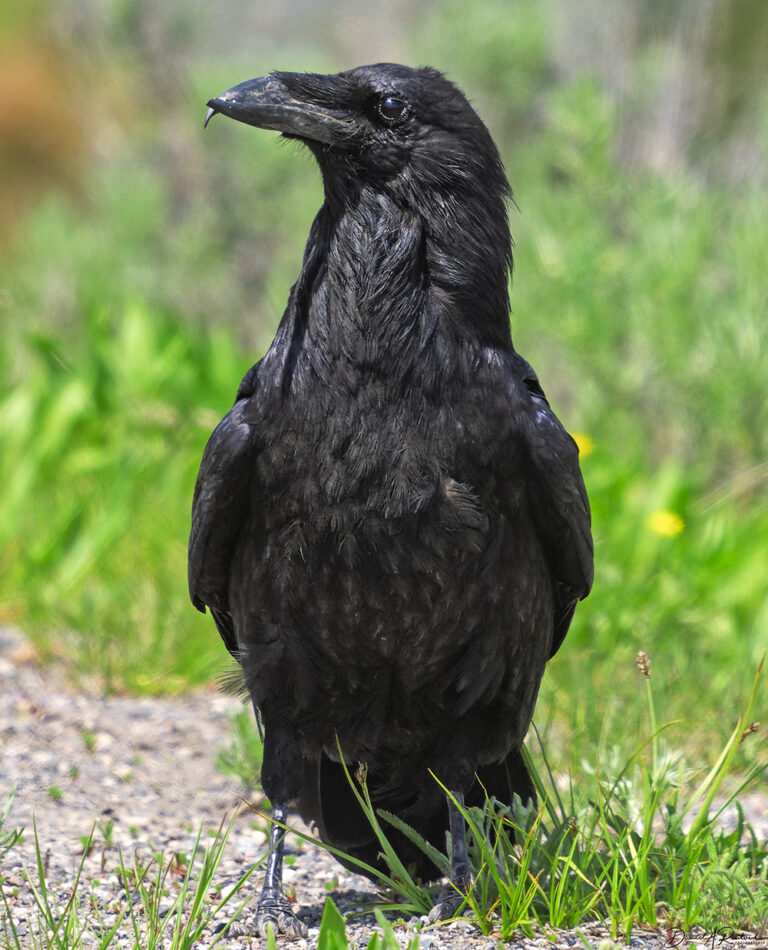
This Common Raven (Corvus corax) was angling for a handout along the road near the above bison. It seems to have a significant overbite, which detracts somewhat from its otherwise regal appearance. Click here for larger image.
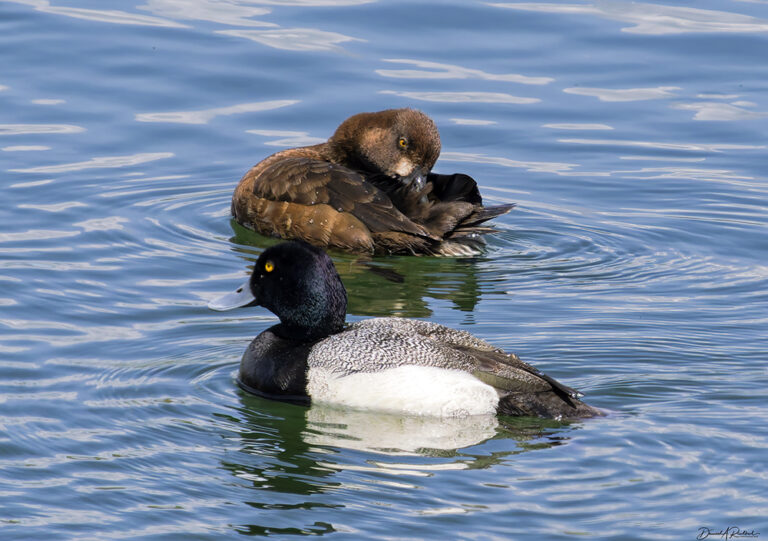
There are two very similar scaup species in North America, and in migration they can be hard to tell apart. But the ones that spend the summer in the lower 48 are Lesser Scaup (Aythya affinis). The larger cousin, Greater Scaup (Aythya marila), nests in the high Arctic regions of Alaska and Canada (aka the 51st state). Click here for larger image.
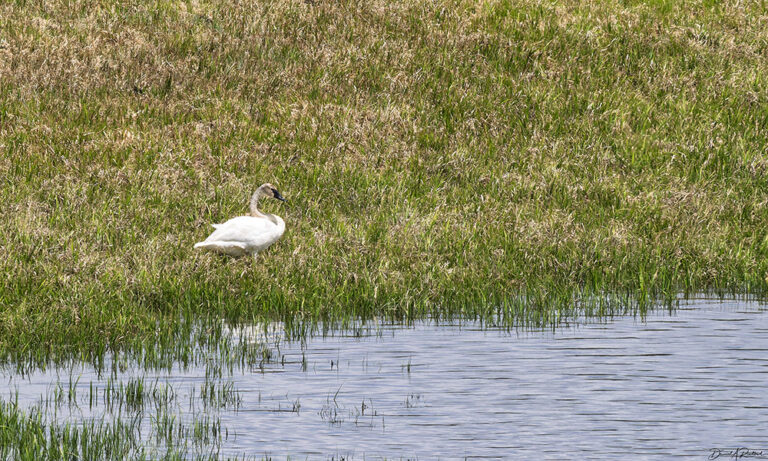
There were plenty of Trumpeter Swans (Cygnus buccinator) in the park that day, but none of them were very approachable. This majestic bird has recovered well from near extinction (there were less than 100 individuals left in 1935) and are now regularly sighted in winter in my patch of Flyover Country. Click here for larger image.
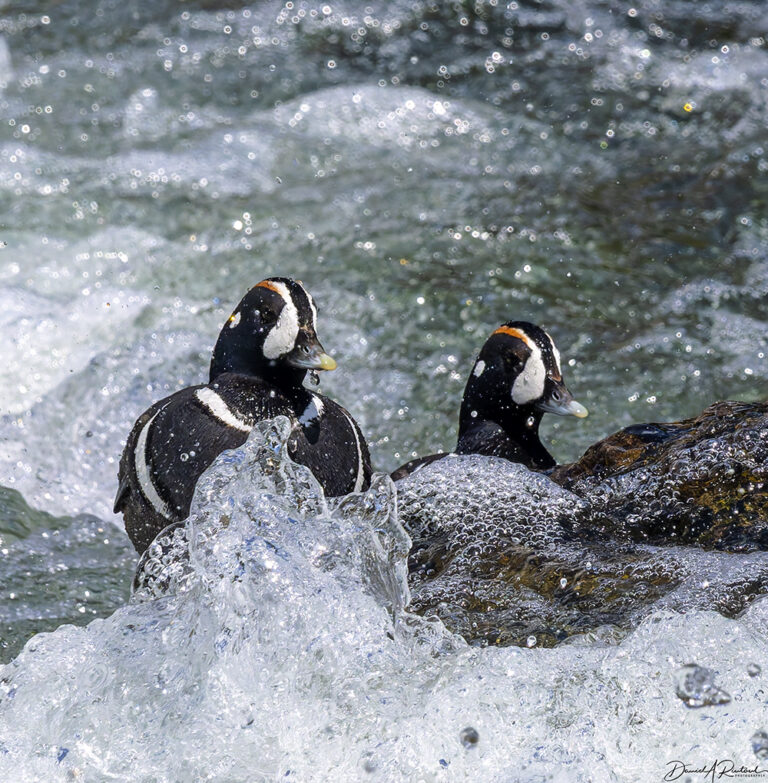
Probably the highlight of the trip, bird-wise, would be these Harlequin Ducks (Histrionicus histrionicus) in the rapids of the Yellowstone River. My daughter had some inside information from a colleague about where to go to see these sturdy little athletes, and that information was 100% accurate. We found them within minutes after we reached the site. They are at home in the rapids, and a lot of fun to watch, even if they didn’t seem particularly histrionic that day. Click here for larger image.
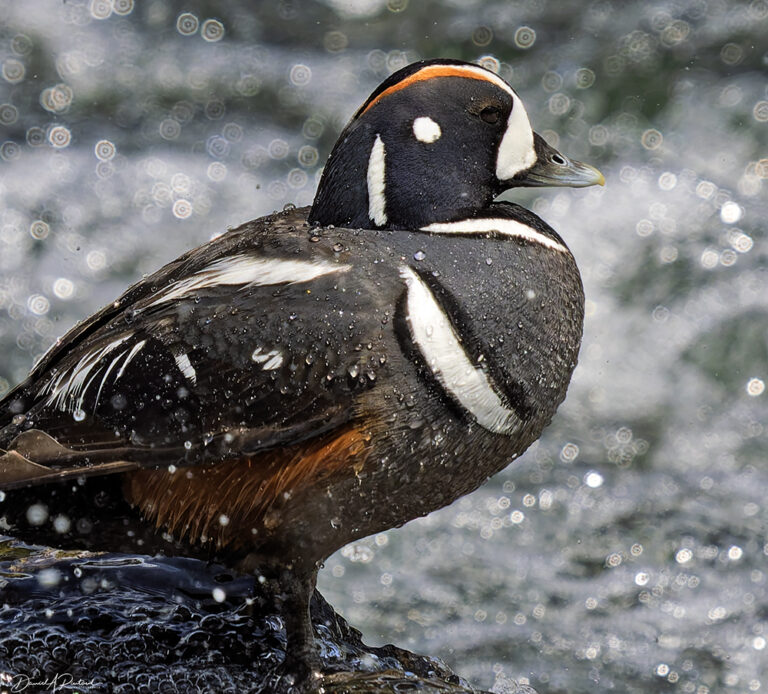
They are also gorgeous birds, as you can see here. Click here for larger image.
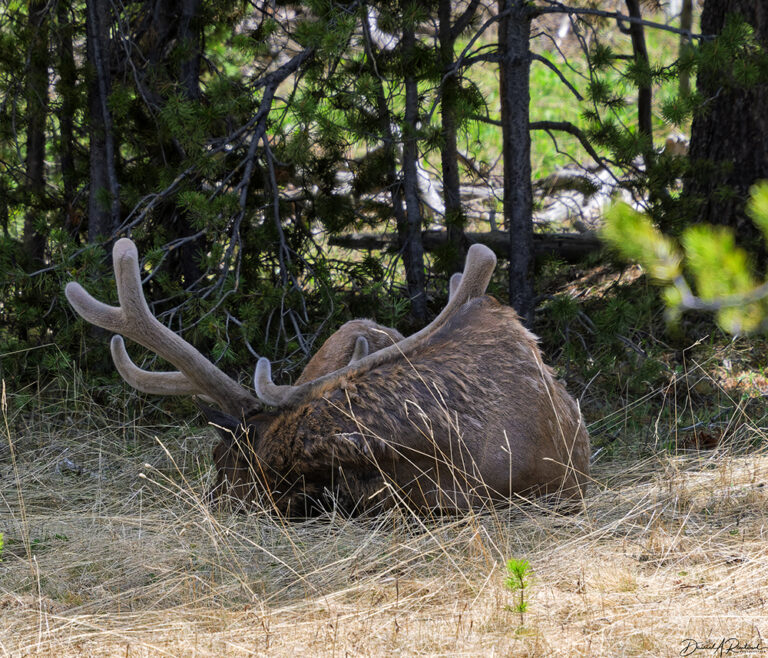
This massive bull Elk (Cervus canadensis) was snoozing beside the road when we drove by; it took a while to get past the knot of cars and people angling to get a good photo. When we had to drive past that same spot on our way out of the park, he had roused himself and was feeding very close to the road. Even more cars and people there, and some visible stupidity on the part of some folks who were getting just a bit too close. We moved on. Click here for larger image.
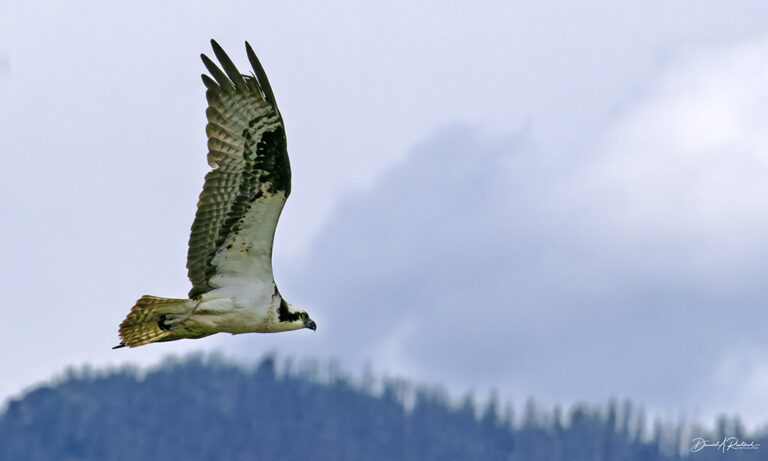
Along highway 89 on the way back to Bozeman, there is an Osprey (Pandion haliaetus) nest near the Emigrant Rest Area. The highway gets very close to the Yellowstone River at that point, and I suspect that these birds had plenty of fish to feed their chicks. Click here for larger image.
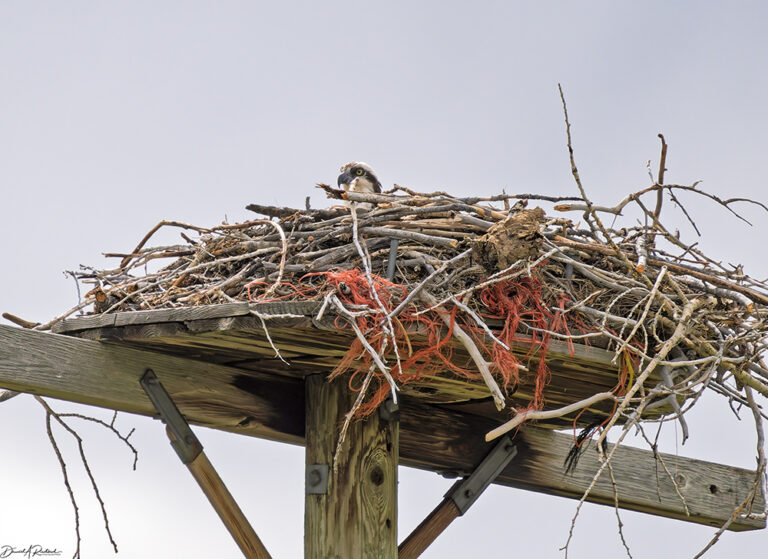
Here’s the other Osprey on the nest, probably incubating eggs. Thanks to the wonders of Google Maps Street view, you can also see that nest here. Hopefully a couple of young Ospreys fledged from that nest this summer. Click here for larger image.
That’s all for now, folks. Please use the comments to weigh in about possibilities for next week and/or later weeks if you feel the urge.

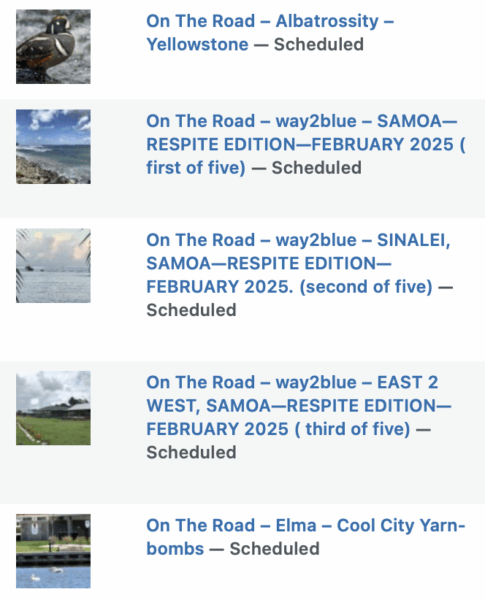
Ten Bears
Most miss it as they flyby, but flyover country has some fascinating geology …
Winter Wren
Love the Harlequin duck shots – we see them here in MA every winter, but I was privileged to see them on a river in Iceland during nesting season. Didn’t know they nested in the lower 48.
As for future themes, would love to see either your bird favorites even if there are repeats as well as seeing more of the landscapes of the places that you visit.
Wanderer
I enjoy every post you write. Your photographs are beautiful no matter what species of bird. I would enjoy more hummingbird photos. You capture them in all of their beauty and even humor and I always learn more about them.
swiftfox
It was a long time ago (1994) but I attended a pronghorn conference in Emporia about the time Kansas was releasing and radiocollaring pronghorn in the Flint Hills. An update on their status might be a future subject.
Jeffg166
The blur of the holiday season is at hand. It goes by faster and faster every year. Then on to a new year and tax season.
p.a.
Great pics as always!
I have commercially-bought beehouses mounted on a wall, one has all same-sized holes that is almost exclusively used by leafcutter bees. Last week watching from my window I saw a Blue Jay slam beak first into it, land/fall to the ground (about 4′ fall), shake itself off, and fly off. Went outside to investigate, and one of the chambers that had been completely filled to the front of the hole was now missing at least one brood chamber. Tough way to get a meal.
Another Scott
I don’t often comment, but I greatly enjoy your masterful photography and beautiful commentary.
The crow picture is interesting – I don’t think I’ve seen one with an offset beak like that. Maybe a possible theme could be “less than perfect specimens” or something similar? Misfits? Etc.?
(Our dog Ellie was hit by a car or suffered similar trauma as a puppy before we adopted her. Her pelvis was broken in 4 places and her right femur was shattered. Somehow she healed on her own, and somehow she hasn’t let it bother her even with the leg being maybe an inch shorter than the other and her foot turned out (so she pogos a bit when she walks). She’s a sweet, fun dog, but she does go nuts when noisy motorcycles, cars, and trucks go by…)
Thanks for all you do.
Best wishes,
Scott.
Trivia Man
Possible themes – chicks, a selection of birds you intentionally went searching for, the rarest you’ve seen, or the most common you’ve seen.
SteveinPHX
Thank you for the education and photos.
eclare
The Harlequin ducks are so cute! Amazing photos of Yellowstone, the theme could “all creatures great and small.”
I would like to see your favorites, whatever they are, and even if we’ve seen them before.
Eyeroller
@Another Scott: That’s a raven, not a crow. How to tell the difference? (Especially in a picture with no reference for scale.). “A crow is a bird with a beak. A raven is a beak with a bird.”
(Edit: ravens are in the same genus as many birds called crows but I’m distinguishing them from the more common American crow. The raven’s call is also distinctive compared to the American crow’s caw.)
Minstrel Michael
The bison photo (insert applause here) reminded me of my own Shelby experience, back in the 1980s. I had an Internet pen pal I got to meet when she came to Boston for a professional conference, and we hit it off. Later I lost my cushy computer gig and decided to take a real vacation and some time off before diving back into the grind. So I bought an Amtrak ticket to ride across the country, to visit my sister in Seattle, which allowed me to get off the train once in each direction and resume travel later.There wasn’t much in Shelby– a cheap motel, a surprisingly good Chinese restaurant, a ten block long main street, and a country music radio station. I was at the time doing some deejaying at the Tufts radio station, so I stuck my head into the Shelby station, which was actually quite something. They had an AM station that was all about the community, programming about farming best practices and commodity prices and hints from Heloise, and then an FM station that was maximally automated: big reels of tape with hours of country music, racks of “carts” (which look just like the old 8 track tapes from 1980s car stereos) containing ads, public service announcements, and the hourly station IDs and minimal patter, all controlled by a master tape prepared by a service somewhere else (probably Nashville), and all the in-house station engineer had to do was change all those tapes once a week and otherwise make sure all the hardware works properly.
But Shelby was also the closest Amtrak station to Lethbridge, where my pen pal lived. There isn’t much in Lethbridge; it’s the third biggest city in Alberta, named after some rich Englishman who funded it but never visited. But an hour away from there is something called Head-Smashed-In Buffalo Jump, a big gradual incline ending in an abrupt cliff. It was the practice of the indigenous tribe, at the beginning of winter every year, to stampede a herd of buffalo up that rise and over that cliff, and then butcher all the bison into food, fur for warmth, and bones for tools, to tide themselves over until they could hunt and gather again. It’s now a UNESCO-designated World Heritage Site that preserves and interprets over 6,000 years of Plains Buffalo culture; they’ll take you up to the cliff edge, and there’s also a museum at the bottom with just boatloads of artifacts– during the winter artisans would decorate the leftover skulls with paint and bits of mica.
Seattle (and Chicago on the way back) were fun too, but Head-Smashed-In was particularly awesome. I’m sorry to have to admit that I was never a good photographer, so I don’t have any pictures.
donatellonerd
@Trivia Man: =each of those could be an interesting series imo
stinger
I like the idea of “Albatrossity’s Favorites”, but I’m sure I’d like whatever you do. Repetition is not bad — it’s one of the important ways we learn!
Another Scott
@Eyeroller: D’Oh! Thanks.
(Not enough caffeine yet.)
One of my favorite pictures is of a raven in Banff. It was walking around a parking lot, looking for something to eat. It looked over at me, kinda scowling. The pavement had a lot of fine rounded aggregate, so in B&W there’s a nice contrast between the smooth fine jet-black feathers / beak / eyes and the lighter and varied small stones.
It was a good image for testing B&W laser printers. ;-)
Thanks again.
Best wishes,
Scott.
Hoodie
The trumpeter swan reminded me of a long ago stop at Red Rock Lakes, the nearby breeding grounds. My dad would take me on an annual pilgrimage to visit his WWII buddy in Idaho each summer. From there we’d head out to various parts of the mountain west to camp and fish. It was one of those intensely sunny 90 degree summer afternoons you get in Montana when we stopped at Red Rock Lakes. They had a spring there that poured out ice cold water. I remember putting my head under the outflow and almost blacking out from the temperature change. There was a giant bearded guy there with an equally giant year old Great Pyrenees that would dip in and out of that spring water stream and shake off his thick coat, generating a spay that glistened in the the late afternoon sun. That was probably 50 years ago but it’s one of those magical images you never forget.
PattyP
Histrionicus histrionicus has to be my favorite binomial ever!
Beautiful pictures as usual although the birds in pictures 2 & 8 are kinda odd looking …
zhena gogolia
I love all the bird topics you suggest.
MCat
I love all your posts and look forward to them each Monday. So much beauty. Thank you.
JeanneT
Albatrossity, I’m sure I would like almost anything you want to post, theme-wise. The posts you did about the different color patterns of redtailed hawks and their relatives were very enlighting. I’d love to see some similar about corvids, ducks, owls?
I’m also interested in any photo and sound collections you could assemble around the life cycle of even a very common species – from mating to nesting to fledging to winter behaviors and/or migration, if that makes sense. Or maybe a collection of photos about birds you have noticed that have changed/are changing their movements/migration/reproduction due to climate and ecological changes.
Albatrossity
@Ten Bears: Yeah, it’s easy to miss geology and landscapes when you are flying over at 30,000 ft or driving by at 75 mph. I am pretty sure that I don’t know enough about geology to do more than landscapes, but if you are interested in KS geology, I just learned about this forthcoming book. The author and a couple of the photographers are friends of mine, and I can recommend their work ethic and their work. And even though geology has long been a pain for creationists to explain, the author is a born-again Christian creationist who somehow manages to keep both his faith and his chosen science of geology separated in his thinking. A fertile ground for cognitive dissonance, for sure, but he is an excellent geologist and teacher who somehow manages all that and is a nice guy as well. I’m looking forward to reading it and also to the great photos there.
Thanks for all the suggestions; I’m gonna think about all of them. My only issue with a theme like “Albatrossity’s favorite X or Y” is that it seems selfish, and perhaps too idiosyncratic for an audience greater than 1. I’ll have to think about that one some more.
Trivia Man
@Eyeroller: see, here’s the thing…* you forgot jackdaws.
Ive heard a good rule is “if you think, ‘thats a big, black bird and i wonder what it is’ then its a crow. If you think ‘Holy crap! That thing is enormous’ then its a raven.”
*Reddit deep lore, IYKYK
Trivia Man
Might i also suggest side by side galleries of boy birds and girl birds. I always enjoy the juveniles as well.
Thinking up work for OTHER people to do is fun!
kindness
What to do with the dead air time? Why have our very own posters send in pics of their pets of course! With or without a human in the pic too
Also too in Yellowstone….Don’t pet the fluffy cows! I shouldn’t have to tell you that.
pieceofpeace
Bison are such grand beings!
Also admire the shot of the Harlequin Ducks with (still) water giving good perspective.
Good photo today, below, Cope!
Dmkingto
@swiftfox: That reminded me of an article from a photography magazine in the 80s (I think). It was about using camera motor drives. The author had used his motorized camera (35mm film) to shoot a herd of pronghorn running past. He thought he was going to have a great sequence of the full gaits of the pronghorns. After getting the developed film back, he discovered the motor drive speed happened to sync perfectly with their speed, so every shot had them with the same leg position!
@swiftfox:
TheOtherHank
I vote for whatever strikes Albatrossity’s fancy. All your pictures are amazing. I’ll look at and enjoy them however you want to group them.
Dmkingto
Love the Harlequins! Made me think of American Dippers and their habit of walking underwater and upstream in riffles. I got to observe them and their behavior at the Landels-Hill Big Creek Reserve years ago. The reserve is part of the UC Natural Reserve System, located near Big Sur in the Santa Lucia mountains – ucnrs.org/reserves/landels-hill-big-creek-reserve/
As part of the Ecology Super Course (a quarter-long UCI & UCSD program back then), we spent about a week camping and studying there. Part of each field trip (the other two were to the Audubon Starr Ranch in Orange County and a 10-day trip to Bahia de los Angeles in Baja), was to practice field research techniques. So a partner and I spent one morning watching the Dippers and timing their underwater foraging. I don’t remember any of our results, but the Dippers themselves have always stuck with me.
For those unfamiliar with them, American Dippers are these cute little puffballs that like to stand around on rocks in the middle of fast streams. Quite often they’re just bopping up and down on the rock until they suddenly dive into the stream and disappear for disconcertingly long times. Then they reemerge several feet/yards upstream. But the cutest thing was the fledglings trying to learn how to forage. Most of them didn’t really have the diving part worked out, so they would jump into the water and get rapidly swept downstream until they could clamber out onto a rock again.
A woman from anywhere (formerly Mohagan)
@Dmkingto: I read somewhere recently that American Pronghorns are MUCH faster than they need to be to escape current predators, and the theory is they evolved their speed way back when the North American continent had cheetahs.
A woman from anywhere (formerly Mohagan)
I love all your bird pictures! It would be fun to see birds (and whatever else takes your fancy) from California, since that’s where I live. I always learn from your posts. Maybe a series on telling IDing gulls.
Albatrossity
@A woman from anywhere (formerly Mohagan): Ha! Gulls!
Someone else would need to be recruited to write that one. Gulls are impossible, IMHO, mostly because they hybridize extensively AND have multiple juvenile plumages before they get to the adult plumage. I have always contended that there would be a lot more birdwatchers if the checklists had “Gull” rather than that long list of confusing miscegenating aerial rats!
Trivia Man
@Albatrossity:
And of course San Francisco has no seagulls. In that area they are called Baygulls I’m told. Cream cheese extra.
Chris T.
That raven’s buddies tease him, calling him “Bentbeak”.